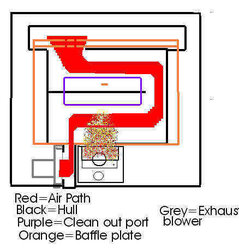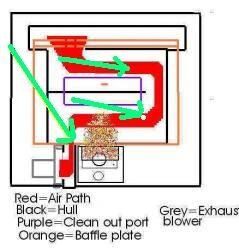I hope this doesn't sound too anal, but I was wondering if anyone has attempted to draw the internal panels and passageways comprising the heat exchanger/exhaust gas path for the Englander 25-PDVC and/or 25-PDV? I've tried to examine this on my PDVC with a light and mirror, with the baffle plate removed, but it still bugs me that I'm not sure exactely where to shove a small diameter hose into the non-visible openings at the top behind this plate for best cleaning. Anyone care to share their knowledge on best cleaning technique with a vacuum? And yeah, I'm aware of the leaf-blower method, but for those of us who want to do the vacuuming, it would be nice to know what works and what's a waste of time.
I asked in another thread if Mike Holton could provide same, or even better, a picture of the stove's internals during manufacture, before the box is welded up. I tried but couldn't find that thread, so maybe he will chime in and help us out.
I asked in another thread if Mike Holton could provide same, or even better, a picture of the stove's internals during manufacture, before the box is welded up. I tried but couldn't find that thread, so maybe he will chime in and help us out.



